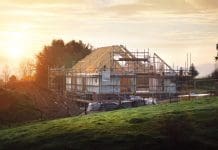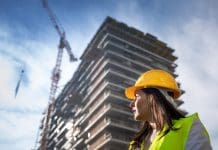Proposals for a new Clean Air Act should include urgent action to tackle urban smog by supporting building pollution measures
Building pollution measures could reduce poor air quality. The Building Engineering Services Association (BESA) is calling on the government to focus on measures that support the role buildings can play in tackling urban smog when developing a new Clean Air Act.
A coalition of environmental campaigners, health bodies and industry groups launched a campaign that urged the government to take action. The group, which includes Greenpeace, Friends of the Earth, the Royal College of Physicians, the British Lung Foundation (BLF) and environmental lawyers ClientEarth, said the government needed to create new legislation to tackle urban smog.
Poor air quality contributes to some 40,000 early deaths a year across the UK and was described by BLF chief executive Dr Penny Woods as a “public health crisis”.
She said: “Toxic air is a risk to everyone, but hits those with a lung condition, children and the elderly hardest.
“We need a new, fair and ambitious Clean Air Act, with targets to slash pollution levels across the country and to remove the most polluting vehicles from our towns and cities.”
Building pollution measures can provide ‘safe havens’
BESA said the threats from polluted air could be challenged more quickly if there was a focus on how building occupants can be protected from external pollution.
Chief executive Paul McLaughin said: “People spend more than 80 per cent of their time indoors and there is still a lot more we can do to improve indoor air quality (IAQ).
“A series of low cost, maintenance measures to ensure ventilation systems work properly and incoming air is filtered and cleaned would make a major difference to the health and well-being of building occupants.”
He added: “Reducing toxic emissions from vehicles and industrial processes is vital, but will take many years to produce results and involve major long-term investment.
“Improving building ventilation is a quick and relatively painless process that can be tackled today to help protect people in the meantime. Building owners also have a duty of care to protect the health of their tenants and employees.”
The impact of poor air quality
Poor air quality in a building can have a negative impact on occupants, and not just on their health. A survey carried out by BESA last year found that almost 70 per cent of office workers said poor air quality in their workplace was negatively impacting their day-to-day productivity and wellbeing.
A further third also said they were concerned poor indoor air quality was damaging their health.
“A well-sealed building envelope combined with effective filtration of incoming supply air can reduce particle penetration by 78 per cent,” explained McLaughlin.
“Considerable investment has already been made in improving the airtightness of buildings to reduce energy consumption and that same process can be used to manage air quality.
“The general public already understands the impact temperature has on healthy and productive conditions inside buildings – we now need to stress that the same principle should apply to air quality.
“When it is too hot or cold outside, people now expect to be able to enjoy comfortable temperatures inside. They should also expect similar protection from rising air pollution.”
















